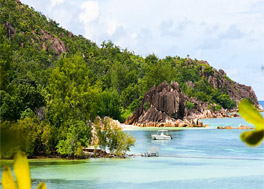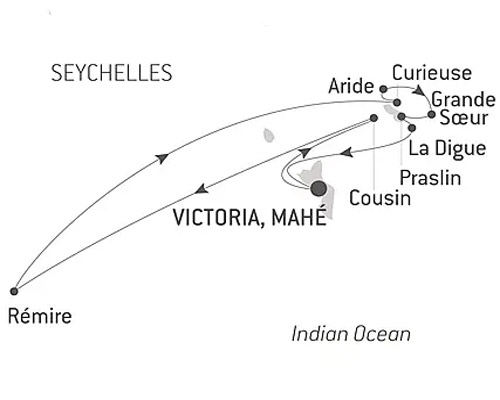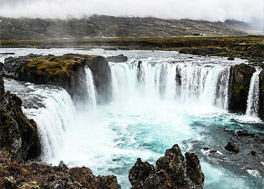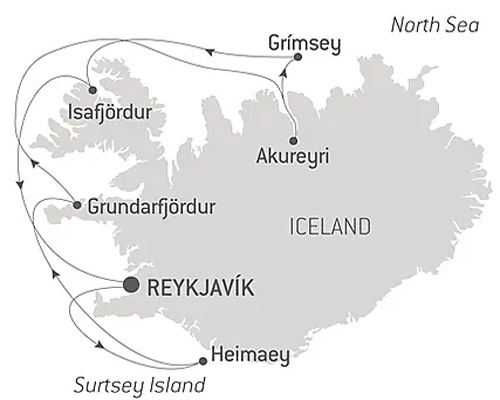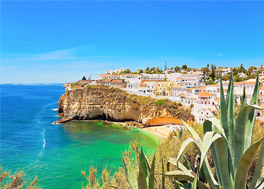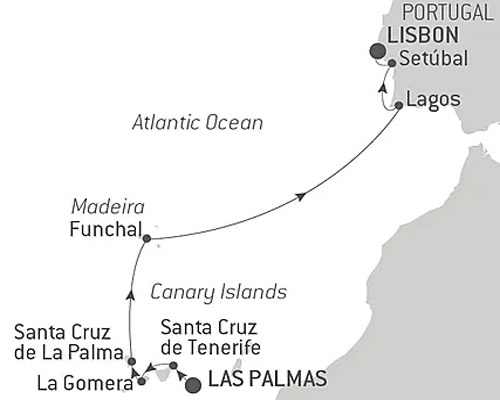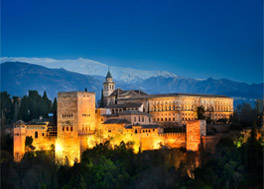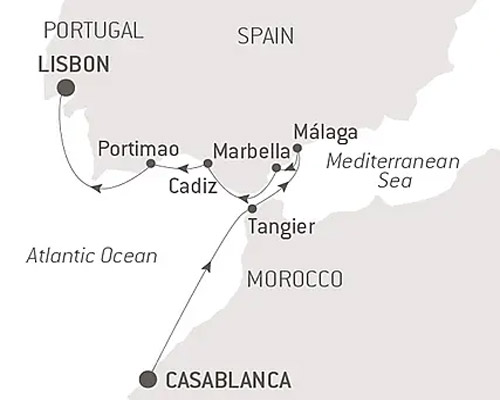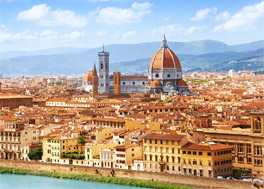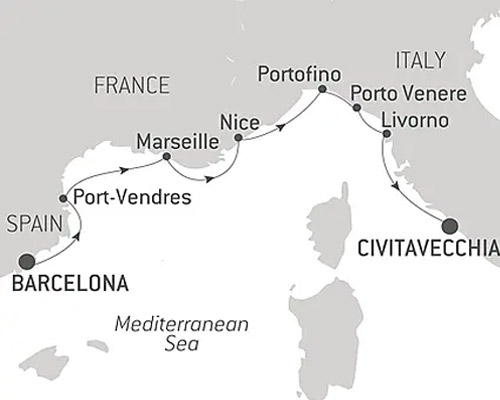
Expert guidance for your cruise vacation!
Let us connect you with our cruise expert to help you to plan the best vacation at the lowest possible price. For fastest service, call us at +91 9920688575
Central America Jewels & Panama Cana
Cruise Line: Ponant Cruises
Ship: Le-Dumont-D-Urville
Sailing Dates: Dec 19 2025 | Dec 26 2025 | Jan 02 2026 | Jan 09 2026
Port: Colon - Puntarenas
Central America Jewels & Panama Cana
Ports of Call & Excursions

Day 1 - Colon
Colón is the second largest city in Panama, at the Caribbean entrance of the Panama Canal. Colón is today an important port, and the free trade zone created in 1953 contributed greatly to the development of the city. Colón was founded in 1850 by Americans working on the Panama railroad connecting the Atlantic and Pacific coasts through the isthmus of Panama; the city rapidly overshadowed the older Caribbean ports of Panama when the canal opened.

Day 2 - San Blas Islands
Located on the north-east coast of Panama, the San Blas archipelago is a string of coral islands in the heart of the Caribbean Sea. More than 300 islands and cays cover an area of 300 square kilometres offering travellers a multitude of treasures. Sheltered behind a long coral reef, the San Blas Islands are full of enchanting anchorages. The long sandy white beaches bound by crystal-clear waters will allow you to relax and enjoy incredible marine fauna before engaging with the Kunas Indian community. Still subsisting on hunting and fishing, they will welcome you in their villages of bamboo houses gathered near the beaches.

Day 3 - Crossing the Panama Canal
Aboard your ship, experience something unique, that has inspired the imagination of numerous adventurers in the 20th century: sailing the Panama Canal. Its construction started in 1880 under the direction of Ferdinand de Lesseps. Abandoned then resumed, this marvel of engineering was completed by the United States and opened in 1914. The canal crosses the Isthmus of Panama and links the Atlantic to the Pacific. Including three levels of locks and by raising ships to the level of Lake Gatun, almost as if the water was a lift, it allows them to avoid having to round Cape Horn.

Day 4 - Fuerte Amador, Flamenco Island
An artificial peninsula situated at the Pacific entrance to the Panama Canal, Fuerte Amador is the gateway to several noteworthy sites. Right near there, the impressive Miraflores Locks are a shining example of the engineering feats deployed during the construction of the Panama Canal. Further north, in villages nestling amid dense vegetation, lives the Embera tribe, guardian of the forest and of the Chagres River. This proud people have successfully preserved their traditions and their ancestral way of life, which predate the colonisation of the region by the Spanish.

Day 5 - Playa Muerto, Darien National Park
The most remote and least developed region of Panama, the province of Darien is an unspoilt land with an extremely rich variety of flora and fauna. Listed by UNESCO as World Heritage, Darien National Park offers its extraordinary scenery of rocky coastlines, mountain ranges, mangroves, rivers and creeks. Discover Playa Muerto, a tiny coastal village home to the Emberas Amerindian community. You will visit the village, attend traditional songs and dances of the locals, and admire beautiful local craft.

Day 6 - At sea
During your journey at sea, make the most of the many services and activities on board. Treat yourself to a moment of relaxation in the spa or stay in shape in the fitness centre. Depending on the season, let yourself be tempted by the swimming pool or a spot of sunbathing. This journey without a port of call will also be an opportunity to enjoy the conferences or shows proposed on board, depending on the activities offered, or to do some shopping in the boutique or to meet the PONANT photographers in their dedicated space. As for lovers of the open sea, they will be able to visit the shipâs upper deck to admire the spectacle of the waves and perhaps be lucky enough to observe marine species. A truly enchanted interlude, combining comfort, rest and entertainment.

Day 7 - Golfito
The town of Golfito lies on the Pacific coast of Costa Rica, in the province of Puntarenas, one of the most humid regions in the world. It was occupied by the indigenous Bruncas tribe during the Pre-Columbian era. Once specialised in the export of bananas, Golfito has today become the starting point for visitors who want to reach one of the largest primary tropical rainforests in Central America. Meanwhile, the beaches of Golfo Dulce are some of the most beautiful in Costa Rica, with the lush forest, home to many tropical birds and monkeys as well as a variety of rare species of plants, as their backdrop.

Day 8 - Puntarenas
The capital of the eponymous province, Puntarenas is sometimes called âthe pearl of the Pacificâ, for its unique charm. It sits on the Pacific coast of Costa Rica, along the Gulf of Nicoya, lined with long expanses of wild natural environments. Further inland, among the countless natural wonders to be found in the generous rainforest of the Costa Ricaâs national parks, Poas and Arena volcanoes towers up in all their majestic glory. In this luxuriant natural setting, Costa Rica protects one of the planetâs richest biodiversity: monkeys, sloths, tropical birds, iguanas, crocodiles, waterfalls, canyons, and more than ten thousand species of tropical plants.
Pearls of the Caribbean
Cruise Line: Ponant Cruises
Ship: Le-Dumont-D-Urville | Le-Bellot
Sailing Dates: Nov 29 2025 | Dec 12 2025 | Mar 08 2026
Port: Fort-de-France - Fort-de-France
Pearls of the Caribbean
Ports of Call & Excursions

Day 1 - Fort-de-France
Located on the western coast of Martinique, Fort-de-France will amaze you by the splendour of its bay, a magnificent cut-out in the coastline, considered as one of the most beautiful in the world. At the harbour mouth, on its strip of land, fort Saint-Louis overlooks the capital city of Martinique. If you climb up to it, you can see some breath-taking views. Saint Louis Cathedral and the Schoelcher library bear witness to a secular history, intimately linked to the islandâs story. Why not try some fresh coconut at the colourful Grand Marché. Two really pleasant places you can take a breather in, right in the heart of the city, are the garden of Balata and the Aimé Césaire park.

Day 2 - Port Elizabeth, Bequia Island
In the heart of the Caribbean, Bequia is the second-largest of 32 islands that make up the country of St Vincent and the Grenadines. You will love the lively and picturesque atmosphere of Port Elizabeth, the islandâs main town. From the port, a promenade lined with beautiful traditional houses, landscaped gardens and small restaurants runs along the shoreline. It leads to Princess Margaret Beach, a wild beach where Princess Margaret herself has stayed and which seems to emerge directly from the tropical forest. From rainforest to lush meadows and long stretches of sand, Bequia will offer you a natural setting that is conducive to lovely walks and to spending time on the beach.

Day 3 - Tobago Cays
Scattered between St Vincent and Grenada, the Tobago Cays comprises five little islands: Petit Rameau, Petit Bateau, Baradal, Petit Tabac and Jamesby. This rosary of uninhabited cays in the southern West Indies is a marine park whose turquoise lagoons provide a home and safe haven for some outstanding marine fauna, including peaceful green turtles. Girded and united by a coral reef, these secluded islands are a peaceful paradise for divers, swimmers and snorkellers.

Day 4 - Mayreau Island
Among the string of paradisiac islands with their sandy beaches that form the Saint Vincent and the Grenadines archipelago, Mayreau is the smallest. Its peaceful and idyllic atmosphere, far from the madding crowd, invites you to relax. On shore, enjoy a shaded and fully equipped beach from which to go snorkelling if youâd like to observe the colourful fish around the coral sitting at the foot of the rocks that stretch across the bay.

Day 5 - Union Island
Deserted bays, long stretches of golden sand, turquoise waters and endless coral reefs â Union Island is without a doubt one of the most beautiful islands in the Caribbean. Overlooked by soaring peaks, this strange little strip of land owes its nickname of âthe Tahiti of the West Indiesâ to its volcanic silhouette and its large swathes of greenery. When you call here, you will discover what the locals consider to be âthe best-kept secret in the Grenadinesâ -Chatham Bay. Surrounded by hills and valleys carpeted in tropical rainforest, sheltering many sea turtles, this delightful half-moon of sand is, each day, the setting for the tireless ballet of the numerous pelicans who inhabit the island.

Day 6 - Pigeon Island Beach
Linked to St Lucia by a sand causeway, Pigeon Island has been a designated National Park since 1979. On this wild and pristine land, you will be inspired to take pleasant walks amid the tropical vegetation and through a magnificent tree-filled garden. You will also be irresistibly drawn to the two pretty little sandy beaches nestling on the southern side and bathed by crystal-clear waters. While snorkelling, be sure to explore the underwater world that is teeming with life, along the rocks lining this peninsulaâs coast. You will thoroughly enjoy the calm and beauty of this place, which is really conducive to simply relaxing.

Day 6 - Soufriere
Nestled in the crook of a breath-taking bay, the former capital of St Lucia is brimming with attractions. Soufrière is famous for The Pitons, volcanic spires that tower over the entrance to the town. In the vicinity of the lush botanical gardens, you will be able to enjoy the curative powers of the Diamond Falls mineral baths. From the beach at the north end of the bay, you can set off to explore the reefs that are home to stunning gardens of sea fans at the foot of the cliffs that plunge into the sea.

Day 7 - Les Saintes
During the feast of All Saints in 1493, Christopher Columbus discovered this archipelago of nine islands that he named "The Saints". Today, only two of them are inhabited. Terre de Haut, in the east, is dominated by the Morne Mire hill; at the summit stands Fort Napoleon, paying homage to the islands' history. In the heart of the botanical garden, shared by iguanas and cacti, there is an exceptional view of the Baie des Saintes, one of the most beautiful in the world. The long shady beach of Pompierre, where it is forbidden to drop anchor, is a peaceful place for a swim, while Pain de Sucre Beach offers wonderful opportunities for snorkelling. On the island, donât forget to taste the local speciality, the âtourment dâamourâ, a cake made with coconut.

Day 8 - Portsmouth
With its mountainous terrain, vast tropical forest, hot springs, rivers and spectacular waterfalls, Dominica is undoubtedly the wildest island in the Caribbean. Protected by several national parks, this little-known land, located in the heart of the Caribbean Sea, between Guadeloupe and Martinique, will inspire adventure and exploration. During your port of call, do not miss out on discovering the enchanting landscapes of the Indian River: navigating through this dense mangrove, in which creepers, ferns, forest trees and giant roots are interweaved, is a magical experience, a fascinating voyage into the heart of an almost mystical natural universe.

Day 9 - Fort-de-France
Located on the western coast of Martinique, Fort-de-France will amaze you by the splendour of its bay, a magnificent cut-out in the coastline, considered as one of the most beautiful in the world. At the harbour mouth, on its strip of land, fort Saint-Louis overlooks the capital city of Martinique. If you climb up to it, you can see some breath-taking views. Saint Louis Cathedral and the Schoelcher library bear witness to a secular history, intimately linked to the islandâs story. Why not try some fresh coconut at the colourful Grand Marché. Two really pleasant places you can take a breather in, right in the heart of the city, are the garden of Balata and the Aimé Césaire park.
Gourmet escapade in the Canary Islands with Pierre Herme and La Mamounia
Cruise Line: Ponant Cruises
Ship: Le-Bellot
Sailing Dates: Apr 06 2025
Port: Las Palmas de Gran Canaria, Canary Islands - Casablanca
Gourmet escapade in the Canary Islands with Pierre Herme and La Mamounia
Ports of Call & Excursions

Day 1 - Las Palmas de Gran Canaria, Canary Islands
A stopover of sunny climes, Las Palmas is located on the north-east coast of Gran Canaria. A few streets away from Puerto de la Luz port, youâll discover the vast Las Canteras beach, bordered with the townâs characteristic palms. Youâll find these palms are all over Las Palmas, in the streets and squares, especially on the plaza de Santa Ana in the heart of the historical district. It feels like youâve travelled back in time here, as you stand looking at the tall houses beside the Santa Ana cathedral. Very close by, you can visit the Casa de Colón, a museum dedicated to the famous explorer. The museum is housed in the palace belonging to the islandâs former governor. Chances are, youâll be drawn to the covered Vegueta market to partake in some daily life along with the locals and taste some unfamiliar dishes.

Day 2 - Santa Cruz de Tenerife, Canary Islands
The capital city of Tenerife is located on the north-east coast of the island. Close to the port is the monumental Plaza de España, bedecked with a fountain and plant sculptures. Around the plaza, you can admire the white marble Triunfo de la Candelaria obelisk, the historic casino of Santa Cruz and the majestic Guimerà theatre. Not far from here, the picturesque Iglesia de la Concepción church features the characteristic traits of Canaries architecture.
07/04/2025
07/04/2025
07/04/2025

Day 3 - San Sebastian de la Gomera, Canary Islands
La Gomera rises from the water like a mirage. This volcanic island in the Canaries features jagged cliffs, valleys covered in palm trees, and beaches of black sand bathing in crystal-clear waters. But its greatest treasure lies at its heart: an exceptional laurisilva, a laurel forest whose prehistoric vegetation has been preserved thanks to the microclimate on the island. This unique ecosystem, common a few million years ago in the tropics, forms the Garajonay National Park, listed as a UNESCO World Heritage Site. Like the birds, the Guanches contribute to the poetry of the island too, with their whistled language called Silbo. This magical-sounding, melodious language is also listed as World Heritage by UNESCO.
08/04/2025
08/04/2025
08/04/2025
08/04/2025

Day 3 - 4 - Santa Cruz de La Palma, Canary Islands
The capital of the island of Palma, Santa Cruz de la Palma is the pearl of the Canaries. Founded in 1493 by the conquistador Alonso Fernandez de Lugo, the city has preserved a large and atypical architectural heritage from its colonial past, with its traditional Canarian houses adorned with brightly coloured wooden balconies, its cobbled streets, its sumptuous palaces and its numerous religious buildings. The Santa Catalina Castle is the symbol of the city. This 16th century military fortification helped defend the city from repeated attacks by French privateers.
09/04/2025
09/04/2025
09/04/2025
09/04/2025
09/04/2025

Day 5 - 6 - Funchal, Madeira
This attractive capital of Madeira is located on the southern coast of the island. The walkways of the old town are lined with azulejos, or multi-coloured mosaics. If you follow these patterns, theyâll lead you to the appetising Mercado dos Lavradores market stands, the Frederico de Freitas museum, and the golden panelling of the Cathedral de la Sé. Along the waterfront, the palm tree-shaded promenade leads you to the teleféricos de Monte, Madeira's cable cars. Its panoramic cabins transport you over the city to top of Monte, where you can see the picturesque botanical garden.
10/04/2025
10/04/2025
10/04/2025
11/04/2025
11/04/2025
11/04/2025
11/04/2025

Day 7 - At sea
During your journey at sea, make the most of the many services and activities on board. Treat yourself to a moment of relaxation in the spa or stay in shape in the fitness centre. Depending on the season, let yourself be tempted by the swimming pool or a spot of sunbathing. This journey without a port of call will also be an opportunity to enjoy the conferences or shows proposed on board, depending on the activities offered, or to do some shopping in the boutique or to meet the PONANT photographers in their dedicated space. As for lovers of the open sea, they will be able to visit the shipâs upper deck to admire the spectacle of the waves and perhaps be lucky enough to observe marine species. A truly enchanted interlude, combining comfort, rest and entertainment.

Day 8 - Casablanca
Situated along the Atlantic coast, Casablanca is the very image of contemporary Morocco: Westernised and cosmopolitan. Exploring the architectural heritage of the âWhite Cityâ tells you all you need to know about its cultural and historical diversity. Breathtaking highlights include the majestic Hassan II Mosque, considered to be one of the greatest religious buildings in the world. You can explore the narrow alleys of the old Medina, which stand in sharp contrast to the surrounding modern architecture. To get the most from the seafront, the Ain Diab Corniche provides a pleasant place for strolling with easy access to the beach.
Adventure in the Bissagos Islands
Cruise Line: Ponant Cruises
Ship: Le-Bellot | Le-Laperouse
Sailing Dates: Jan 24 2026
Port: Dakar - Dakar
Adventure in the Bissagos Islands
Ports of Call & Excursions

Day 1 - Dakar
On the tip of the African continent, the buzzing capital of Senegal stretches along the narrow peninsula of Cape Verde. You may be overwhelmed by its sheer size, but Dakar will win you over with its richly diverse districts, appealing cultural scene and rich natural surroundings. In the historic centre, you'll enjoy the pell-mell of colours and tasty delights in Kermel market. Far from the effervescence of the city, Gorée Island, a UNESCO World Heritage Site, is known as a place of remembrance, having once been a slave trade outpost. On the other side of the plateau, the wild Madeleine islands are protected by a national park.

Day 2 - At sea
During your journey at sea, make the most of the many services and activities on board. Treat yourself to a moment of relaxation in the spa or stay in shape in the fitness centre. Depending on the season, let yourself be tempted by the swimming pool or a spot of sunbathing. This journey without a port of call will also be an opportunity to enjoy the conferences or shows proposed on board, depending on the activities offered, or to do some shopping in the boutique or to meet the PONANT photographers in their dedicated space. As for lovers of the open sea, they will be able to visit the shipâs upper deck to admire the spectacle of the waves and perhaps be lucky enough to observe marine species. A truly enchanted interlude, combining comfort, rest and entertainment.

Day 3 - Kere, Bijagos
The private island of Kere is an unspoiled Eden, a one-hectare (two-acre) stretch of tropical forest in the heart of the Bissagos Islands. One original feature of this island is that a small, sustainable and fair-trade ecotourism business was developed upon it. On the islandâs magnificent beach, a Frenchman has set up a business to show people around this exceptional natural environment or to take them out for some game fishing, particularly in search of tarpon, a fish weighing over a hundred kilos (220 pounds). The bungalows made from earth and straw blend into the idyllic setting and reflect the mindset of the isletâs owner: authentic and respectful of nature and people.

Day 3 - Carache Island, Bijagos
In the midst of a rich natural environment, you will enjoy a fascinating encounter with the Bijagos, who have been successful at taming their environment and preserving their ancestral way of life. Five villages provide a home for the islandâs few thousand inhabitants, who rely on a subsistence economy: they take from nature only what they need, they cultivate rice, breed chickens and pigs, fish on a small scale and use all the parts of the oil palm. Cob huts with thatched roofs are the traditional dwellings. Among other things, you will be able to enjoy a wonderful show of authentic traditional dancing.

Day 4 - Orango Island, Bijagos
Some 20 kilometres off the coast of west Africa, the Bissau-Guinean archipelago of Bissagos is famous for its abundant biodiversity. The richness of its marine animal and plant life afforded it the status of Biosphere Reserve by UNESCO: dolphins, green tortoises, monkeys, striped antelopes and hundreds of thousands of migrating birds find refuge here. Composed of five islands and several islets, Orango is the largest and most mysterious island in the archipelago. Its national park and marine protected area lie in the heart of the Biosphere Reserve. During your zodiac outings, you will set off to discover this preserved environment, home to the Bijogo people, the true custodians of this sanctuary.
Â

Day 4 - Uno Island, Bijagos
Covered in beautiful savannah, paddy fields and lush forests, the island of Uno, or Ilha de Uno, is one of the most populated in the Bissagos archipelago. In its many villages, life follows the pace of the everyday scenes and traditions of the Bissago people. The lifestyle of these island people remains relatively untouched by colonial domination and external influences, and still honours animist beliefs and rites, such as the fanados, which are coming-of-age initiations for young men and women that involve them spending four months in the forest with the village elders. By sanctifying the natural environment, the islanders are protecting the archipelagoâs unique biodiversity.

Day 5 - Orango Island, Bijagos
Some 20 kilometres off the coast of west Africa, the Bissau-Guinean archipelago of Bissagos is famous for its abundant biodiversity. The richness of its marine animal and plant life afforded it the status of Biosphere Reserve by UNESCO: dolphins, green tortoises, monkeys, striped antelopes and hundreds of thousands of migrating birds find refuge here. Composed of five islands and several islets, Orango is the largest and most mysterious island in the archipelago. Its national park and marine protected area lie in the heart of the Biosphere Reserve. During your zodiac outings, you will set off to discover this preserved environment, home to the Bijogo people, the true custodians of this sanctuary.
Â

Day 5 - Uno Island, Bijagos
Covered in beautiful savannah, paddy fields and lush forests, the island of Uno, or Ilha de Uno, is one of the most populated in the Bissagos archipelago. In its many villages, life follows the pace of the everyday scenes and traditions of the Bissago people. The lifestyle of these island people remains relatively untouched by colonial domination and external influences, and still honours animist beliefs and rites, such as the fanados, which are coming-of-age initiations for young men and women that involve them spending four months in the forest with the village elders. By sanctifying the natural environment, the islanders are protecting the archipelagoâs unique biodiversity.

Day 6 - Joao Vieira Island, Bijagos
In the far south-east of the Bissagos Islands, João Vieira is a small unspoiled island in the João Vieira and Poilão Marine National Park. This park, where a number of sacred sites can be found, is home to a wonderful biodiversity. On the practically uninhabited island of João Vieira, the Bijagos have set up temporary camps for fishing or for collecting the fruit of oil palms. Like everywhere else in the archipelago, the local population displays ingenuity to adapt to this incredible environment.

Day 6 - Cavalos Island, Bijagos
A UNESCO Biosphere Reserve, the island of Cavalos is the second-largest nesting site in West Africa. Here you will be able to observe many bird species, including terns, in particular near the freshwater lake. Take a stroll on the beach full of shells, stretching all the way around the islandâs 6-km (3.8-mile) circumference. Some rocks have mango trees growing on them, which just rise above the surface during high tide. The interior of the island, blanketed in palm trees and high grasses, is inhabited by a colony of wild pigs.

Day 7 - Bolama
Bolama, the capital of Portuguese Guinea from the late 19th century to the end of the 1930s, is shrouded in the surreal and poetic atmosphere of a ghost town forgotten by time. Along the streets covered in ochre earth, the vestiges of neoclassical colonial buildings hint at what was once the sumptuous government palace or the governorâs residence. Now neglected, this hard-to-reach natural harbour surrounded by mangrove swamps once served as an outpost for keeping a close eye on the Guinean population that had come to seek refuge on these remote islands of the Bissagos archipelago to escape their colonisers.

Day 7 - Canhabaque, Bijagos
Canhabaque Island, also known by the name Roxa, is covered in lush vegetation and boasts pretty beaches alternating with rocky formations. The first island in the archipelago to be inhabited, it is today home to a community of around 2,500 inhabitants, spread across various tabancas (rural villages). Long closed to tourism, it is considered the most traditional island in the whole archipelago in terms of customs and lifestyle. It competes with Caravela for the reputation of the most beautiful island. It has an animist and matrilineal society; women are highly predominant in the management and maintenance of balance in the tabancas.

Day 8 - Caravela Island, Bijagos
Dotted with authentic and wild landscapes, the Bissagos archipelago is a constellation of islands covered in savannah, forests of palm trees, mangrove trees, silk-cotton trees, baobabs and, in large part, mangrove swamps. From the island of Caravela, you will be able to set out in a Zodiac® dinghy to explore the mangrove and observe the African grey hornbill, the palm-nut vulture, the kingfisher, the weaverbird and some of the many species that fly to this region each year. It is the second most important site for migratory birds in West Africa, after Banc dâArguin in Mauritania: herons, curlews, red-chested swallows. In full immersion, far from the beaten track, your discovery of the archipelago will take on an air of adventure.

Day 9 - Dakar
On the tip of the African continent, the buzzing capital of Senegal stretches along the narrow peninsula of Cape Verde. You may be overwhelmed by its sheer size, but Dakar will win you over with its richly diverse districts, appealing cultural scene and rich natural surroundings. In the historic centre, you'll enjoy the pell-mell of colours and tasty delights in Kermel market. Far from the effervescence of the city, Gorée Island, a UNESCO World Heritage Site, is known as a place of remembrance, having once been a slave trade outpost. On the other side of the plateau, the wild Madeleine islands are protected by a national park.
7 Days - Treasures of the Greek Isles [Athens, Greece to Athens, Greece]
Cruise Line: Windstar Cruise
Ship: Wind Surf / Wind Spirit / Star Legend
Sailing Dates: May 04 2025 | May 17 2025 | May 24 2025 | May 31 2025 | Jun 01 2025 | Jun 08 2025 | Jun 21 2025 | Jun 28 2025 | Jul 23 2025 | Aug 31 2025 | Sep 06 2025 | Sep 13 2025 | Sep 28 2025 | Oct 12 2025 | May 02 2026 | May 30 2026 | Jun 06 2026 | Jun 27 2026 | Jul 04 2026 | Jul 25 2026 | Aug 01 2026 | Aug 29 2026 | Sep 26 2026 | Oct 01 2026 | Oct 10 2026
Port: Athens, Greece to Athens, Greece
7 Days - Treasures of the Greek Isles [Athens, Greece to Athens, Greece]
| Day | Port | Arrive | Depart |
|---|---|---|---|
| 0 | Athens, Greece | -- | 05:00 PM |
| 1 | Nafplio, Greece | 08:00 AM | 05:00 PM |
| 2 | Mykonos, Greece | 08:00 AM | 06:00 PM |
| 3 | Kusadasi, Turkey | 07:00 AM | 11:00 PM |
| 4 | Patmos, Greece | 08:00 AM | 06:00 PM |
| 5 | Santorini, Greece | 07:00 AM | 09:00 PM |
| 6 | Monemvasia, Greece | 12:00 PM | 06:00 PM |
| 7 | Athens, Greece | 07:00 AM |
The essential Seychelles
Cruise Line: Ponant Cruises
Ship: Le-Bougainville
Sailing Dates: Jan 17 2026 | Jan 25 2026
Port: Victoria, Mahe - Victoria, Mahe
The essential Seychelles
Ports of Call & Excursions

Day 1 - Victoria, Mahe
Discover Mahe, the main island of the Seychelles and also the largest of the archipelago, home to the capital, Victoria. Mahe has almost 70 beaches of fine sand, framed by the emblematic granite rocks, and whose crystal clear waters are renowned for their rich underwater life. The island is also famous for its splendid mountain panoramas accessible on hikes, such as the Morne Seychellois, which is 905 metres high and overlooks the Indian Ocean. Mahe is also an island full of history where fine colonial properties rub shoulders with Creole houses - and donât forget the marvellous Botanical Gardens in Victoria.

Day 2 - Cousin Island
This small granitic islet west of Praslin measures around thirty hectares and is teeming with life. A private property until 1968, Cousin Island was bought by the International Council for Bird Preservation (now known as BirdLife International) to be converted into a nature reserve. The main aim of this effort was first and foremost to save two endangered bird species, the Seychelles warbler and the Seychelles fody. This operation was a real success, as the island is now the most protected in the archipelago and is home to a large number of plants and animals endemic to the Seychelles.

Day 3 - Remire island
Remire Island is like a piece of confetti in the Indian Ocean and is a captivating place to visit. Located in the Outer Islands of the Seychelles, it is prized for its unique biodiversity, including its exceptionally rich underwater life. The rare inhabitants of this tropical islet watch over its preservation, and a walk amidst its lush vegetation, home to delightful birds, will delight fans of unspoilt areas. For those who love snorkelling, myriad colourful fish live among the coral reefs that border the island.

Day 4 - Curieuse Island
Situated off the coast of Praslin, Curieuse has a distinguishing feature: its red earth. Discovered in 1768 by the French explorer Marc-Joseph Marion du Fresne, it was ravaged by a fire in 1771 and then home to a leper colony of which a few vestiges still remain. Declared a national marine park in 1979, it is home to many underwater species, which can be discovered while scuba diving or snorkelling in the idyllic waters of the Indian Ocean. But above all, Curieuse is renowned for the hundreds of Aldabra giant tortoises that live there. It is highly likely that you will get the chance to meet these fascinating reptiles. Along with Praslin, it is also the only island on which the sea coconut grows wild.

Day 5 - Aride Island
Aride is an island in the Seychelles situated a few kilometres north-west of Praslin. Listed as a nature reserve, this pearl of the Indian Ocean will seduce you with the beauty of its landscapes of wild cliffs and fine-sand beaches. Protected from human impact and sometimes called âbird capitalâ, it is home to several endemic plants as well as exceptional wildlife. Most notably, it is the refuge of an impressive number of seabirds (Seychelles magpie-robins, terns, noddies, and more), and reptiles, such as Wrightâs skinks, which can be found in the islandâs wooded areas. Sea turtles can also be observed on the islandâs beaches.

Day 6 - Grande Soeur
Located 6 km north of La Digue, Grande Soeur Island is renowned for its two sumptuous beaches and its translucent waters, protected by a coral reef. An ideal spot for snorkelling and observing the sea turtles that co-exist here with the many multi-coloured fish. The pristine Grande Soeur Island is considered to be one of the most beautiful islands in the Seychelles.

Day 7 - Praslin Island
Situated some forty kilometres away from Victoria, Praslin is the second largest island in the Seychelles. Its idyllic beaches where granite rocks nestle in immaculate sand correspond perfectly to how we imagine the Seychelles to be. They invite visitors to dive into the turquoise waters, which are ideal for snorkelling. In the centre of the island, hidden in the heart of a stunning tropical rainforest, lies the Vallée de Mai Nature Reserve, listed as a UNESCO World Heritage Site. In this veritable plant sanctuary, several endemic species of palm trees can be observed, as well as the famous sea coconut, which can weigh up to 20 kg and is sometimes called âcoco fesseâ because its shape calls to mind a pair of buttocks.

Day 8 - La Digue Island
La Digue Island is a veritable concentration of all the beauty of the Seychelles. Located 6 km south-east of Praslin, this small piece of land that looks like paradise is the third-largest island in the Seychelles, despite its modest size (5 km by 3 km)! Turquoise waters just asking you to swim in them, lush vegetation sheltering giant tortoises, beaches of fine sand fringed with coconut trees and surrounded with those emblematic large granite rocks with their pink highlights like at the famous Anse Source dâArgent: the perfect picture postcardâ¦Â Authentic and preserved, the island follows a peaceful rhythm, with the only means of transport along its little roads being bikes or traditional oxcarts.

Day 9 - Victoria, Mahe
Discover Mahe, the main island of the Seychelles and also the largest of the archipelago, home to the capital, Victoria. Mahe has almost 70 beaches of fine sand, framed by the emblematic granite rocks, and whose crystal clear waters are renowned for their rich underwater life. The island is also famous for its splendid mountain panoramas accessible on hikes, such as the Morne Seychellois, which is 905 metres high and overlooks the Indian Ocean. Mahe is also an island full of history where fine colonial properties rub shoulders with Creole houses - and donât forget the marvellous Botanical Gardens in Victoria.
Icelandic mosaic
Cruise Line: Ponant Cruises
Ship: Le-Champlain
Sailing Dates: Jun 03 2025 | Jun 10 2025 | Jul 28 2025 | Jul 29 2025 | Aug 04 2025 | May 25 2026 | Jun 06 2026 | Jun 13 2026 | Jun 20 2026 | Jul 06 2026 | Jul 13 2026 | Jul 20 2026 | Jul 27 2026 | Aug 03 2026
Port: Reykjavik - Reykjavik
Icelandic mosaic
Ports of Call & Excursions

Day 1 - ReykjavÃk
Icelandâs capital stretches along the edge of a vast bay in the west of the country. Perlan, the âPearl of ReykjavÃkâ, a museum located on âOskjuhlið hill, offers a panoramic view of the lush, green landscapes. A little further, one can easily spot the signpost showing the way to the evangelical HallgrÃmskirkja church, and to the historical centre where one can stroll along the SkólavördustÃgur and the Laugavegur, two lively streets with charming small shops. For some relaxation just outside of the city, visitors have the opportunity to visit the Reykjanes peninsula and its famous thermal lagoons of the Blue Lagoon.

Day 2 - Sailing around Surtsey Island
A small drop of basalt in the North Atlantic Ocean, Surtsey is a volcanic island formed by a submarine eruption that lasted from 1963 to 1967, off the Westman Islands to the south of Iceland. The island is a UNESCO World Heritage Site. To protect its virgin ecosystem against human presence, it is forbidden to land there. Only a few scientists have access to Surtsey to study the plant and animal colonisation of the island. Mosses, fungi and lichens were followed by vascular plants. Around 300 invertebrate species and 90 bird species have gradually colonised it. While sailing around Surtsey, you will enjoy a unique panorama of this extraordinary islandâs contours.

Day 3 - Heimaey, Vestmannaeyjar
This land seated off the southern coast of Iceland is the largest of the Vestmann islands, and is the only inhabited island in the archipelago. The steep Edfell volcanoes and the green prairies of Herjólfsdalur offer rich contrast of nature. On the Stórhöfði road, look out over grey sand beaches and cliffs carved out by the Arctic ocean. From here, you can also see the bronze landscapes of the mountaintops. You could visit Eldheimar, an ultra-modern and interactive museum which traces the volcanic eruption has experienced Heimaey in 1973.

Day 4 - Grundarfjordur
This secret boreal hideaway is located at the foot of the Kirkjufell, on Snaefellsnes peninsula. Arriving by boat means you will get a closer view of the lava-stone rock standing like a sentinel at the entrance to the bay; Grundarfjordur lies sheltered behind this cone-shaped rock. A stoneâs throw from the jetty, crystal clear waters, tundra and beaches give onto the cerulean waters of Breioafjordur. Scattered with its emerald-coloured lawns, this town, with its buildings that merge into the surrounding countryside, will most certainly win your favour.

Day 5 - Akureyri
The elegant city of Akureyri is located very close to the Arctic circle, tucked away in the Eyjafjörður fjord. It displays a stunning palette of colours: blue waters in the harbour, bronze mountain ash on the squares and brightly-coloured houses in the historical centre. As you walk along the cobbled streets, you will come across rows of terraces with wooden furniture. A vast stairway cut into the hillside leads up to the emblematic feature of the town, namely the Akureyrarkirkja church. The very beautiful botanical garden made possible by a microclimate offers the opportunity to discover the Icelandic flora as well as plants from all over the world.

Day 6 - Grimsey
Grimsey is the northernmost island of Iceland surging from the Arctic ocean, with the Arctic circle running through the island. Its contrasted contours are surprising. From Grimseyjarhreppur, the islandâs only town located on the west coast, then heading due south, you can take in the beauty of the hillsides, lushly carpeted with moss and grass. On the rest of the coastline, imposing basalt cliffs inhabited by sea birds stand proud.

Day 7 - Isafjordur
Your ship will take you to the heart of the fjords of North-West Iceland, a wild land of lost valleys and steep cliffs, where man struggles to survive. In this very isolated region we find the Isafjordur fjord, undoubtedly one of the most beautiful in the country, mainly for its relief, forged by many very ancient basaltic flows. The town of Isafjordur, which nestles at the back of its fjord, between imposing mountains, is a delightful little town that lives exclusively from fishing. The capital of the Western fjords, its old wooden houses bear witness to its past as a major fishing port.

Day 8 - 9 - ReykjavÃk
Icelandâs capital stretches along the edge of a vast bay in the west of the country. Perlan, the âPearl of ReykjavÃkâ, a museum located on âOskjuhlið hill, offers a panoramic view of the lush, green landscapes. A little further, one can easily spot the signpost showing the way to the evangelical HallgrÃmskirkja church, and to the historical centre where one can stroll along the SkólavördustÃgur and the Laugavegur, two lively streets with charming small shops. For some relaxation just outside of the city, visitors have the opportunity to visit the Reykjanes peninsula and its famous thermal lagoons of the Blue Lagoon.
From island to island, between fado and concertos
Cruise Line: Ponant Cruises
Ship: Le Boreal
Sailing Dates: Apr 23 2025
Port: Las Palmas de Gran Canaria, Canary Islands - Lisbon
From island to island, between fado and concertos
Ports of Call & Excursions

Day 1 - Las Palmas de Gran Canaria, Canary Islands
A stopover of sunny climes, Las Palmas is located on the north-east coast of Gran Canaria. A few streets away from Puerto de la Luz port, youâll discover the vast Las Canteras beach, bordered with the townâs characteristic palms. Youâll find these palms are all over Las Palmas, in the streets and squares, especially on the plaza de Santa Ana in the heart of the historical district. It feels like youâve travelled back in time here, as you stand looking at the tall houses beside the Santa Ana cathedral. Very close by, you can visit the Casa de Colón, a museum dedicated to the famous explorer. The museum is housed in the palace belonging to the islandâs former governor. Chances are, youâll be drawn to the covered Vegueta market to partake in some daily life along with the locals and taste some unfamiliar dishes.

Day 2 - Santa Cruz de Tenerife, Canary Islands
The capital city of Tenerife is located on the north-east coast of the island. Close to the port is the monumental Plaza de España, bedecked with a fountain and plant sculptures. Around the plaza, you can admire the white marble Triunfo de la Candelaria obelisk, the historic casino of Santa Cruz and the majestic Guimerà theatre. Not far from here, the picturesque Iglesia de la Concepción church features the characteristic traits of Canaries architecture.

Day 3 - San Sebastian de la Gomera, Canary Islands
La Gomera rises from the water like a mirage. This volcanic island in the Canaries features jagged cliffs, valleys covered in palm trees, and beaches of black sand bathing in crystal-clear waters. But its greatest treasure lies at its heart: an exceptional laurisilva, a laurel forest whose prehistoric vegetation has been preserved thanks to the microclimate on the island. This unique ecosystem, common a few million years ago in the tropics, forms the Garajonay National Park, listed as a UNESCO World Heritage Site. Like the birds, the Guanches contribute to the poetry of the island too, with their whistled language called Silbo. This magical-sounding, melodious language is also listed as World Heritage by UNESCO.

Day 4 - Santa Cruz de La Palma, Canary Islands
The capital of the island of Palma, Santa Cruz de la Palma is the pearl of the Canaries. Founded in 1493 by the conquistador Alonso Fernandez de Lugo, the city has preserved a large and atypical architectural heritage from its colonial past, with its traditional Canarian houses adorned with brightly coloured wooden balconies, its cobbled streets, its sumptuous palaces and its numerous religious buildings. The Santa Catalina Castle is the symbol of the city. This 16th century military fortification helped defend the city from repeated attacks by French privateers.

Day 5Â Â - 6 - Funchal, Madeira
This attractive capital of Madeira is located on the southern coast of the island. The walkways of the old town are lined with azulejos, or multi-coloured mosaics. If you follow these patterns, theyâll lead you to the appetising Mercado dos Lavradores market stands, the Frederico de Freitas museum, and the golden panelling of the Cathedral de la Sé. Along the waterfront, the palm tree-shaded promenade leads you to the teleféricos de Monte, Madeira's cable cars. Its panoramic cabins transport you over the city to top of Monte, where you can see the picturesque botanical garden.

Day 7 - At sea
During your journey at sea, make the most of the many services and activities on board. Treat yourself to a moment of relaxation in the spa or stay in shape in the fitness centre. Depending on the season, let yourself be tempted by the swimming pool or a spot of sunbathing. This journey without a port of call will also be an opportunity to enjoy the conferences or shows proposed on board, depending on the activities offered, or to do some shopping in the boutique or to meet the PONANT photographers in their dedicated space. As for lovers of the open sea, they will be able to visit the shipâs upper deck to admire the spectacle of the waves and perhaps be lucky enough to observe marine species. A truly enchanted interlude, combining comfort, rest and entertainment.

Day 8 - Lagos
There stands a natural paradise called Lagos, bordered by the Atlantic Ocean, in the Algarve region of southern Portugal. With its picturesque and age-old town centre, and the Ponta da Piedade natural site sheltering paradisiacal beaches protected by captivating limestone cliffs in hues of ochre, Lagos enthrals, fascinates and enchants. In this interesting blend between nature and culture, do not miss the chance to stroll along the small paved streets of its historic centre, surrounded by impressive Moorish ramparts and edged with traditional white houses, with decorations sculpted in the stone. In particular, you will be able to admire the Manuelian-style Governor's Castle, the 17th-century Ponta da Bandeira Fort or the Church of Santo António in Baroque architecture.

Day 9 - Setubal
A few kilometres south of Lisbon, Setúbal, one of Portugal's most important fishing ports, enjoys an exceptional geographical location. The city is surrounded by vast parks and nature reserves that protect the biodiversity of the Sado estuary and the Arrábida serra. Don't miss the possibility to discover the magnificent wild and unspoilt expanses that border the peninsula and the estuary, whose waters are home to many dolphins, which can easily be observed.

Day 10Â Â - 11 - Lisbon
Portugalâs capital city located on the banks of the Tagus, only a few kilometres from the Atlantic coast, is a city of exceptionally rich cultural diversity. At the mouth of the river harbour, impose two UNESCO World Heritage monuments, Jeronimos monastery and Belem tower. The Alfama hillside is also worth visiting: known for its fado bars and its Moorish streets, this district is the oldest one of the city and one of the most typical. Not far from there, Chiadoâs elegant streets are home to big fashion labels and are an invitation to a bit of of luxury shopping.
Cruising from Morocco to Spain's Andalusian Coast-with Smithsonian Journeys
Cruise Line: Ponant Cruises
Ship: Le-Bellot
Sailing Dates: Apr 13 2025
Port: Casablanca - Lisbon
Cruising from Morocco to Spain's Andalusian Coast-with Smithsonian Journeys
Ports of Call & Excursions

Day 1 - Casablanca
Situated along the Atlantic coast, Casablanca is the very image of contemporary Morocco: Westernised and cosmopolitan. Exploring the architectural heritage of the âWhite Cityâ tells you all you need to know about its cultural and historical diversity. Breathtaking highlights include the majestic Hassan II Mosque, considered to be one of the greatest religious buildings in the world. You can explore the narrow alleys of the old Medina, which stand in sharp contrast to the surrounding modern architecture. To get the most from the seafront, the Ain Diab Corniche provides a pleasant place for strolling with easy access to the beach.

Day 2Â Â - 3 Tangier
Nestling in the Bay of Tangier, this bewitching Moroccan city lies at the northwestern tip of the country, along the famous Strait of Gibraltar. Following in the footsteps of the writers and artists inspired and seduced by the cityâs climate and setting, youâll love its rich landscapes and multicultural charm. Youâll instantly understand as soon as you set foot in the heart of the Medina. An architectural masterpiece, the Kasbah is your gateway to the Sultanâs Palace and its gardens. If you prefer beaches to museums, you can relax just a few minutes from the city on the beautiful sweep of sand bathed by the Atlantic Ocean.

Day 4 - Malaga
A historical and festive town, Malaga is located in Andalusia, on the Costa del Sol. Between the marina and the beaches, the seaside promenade of La Farola offers an ideal setting for strolling and relaxing. Set slightly further back, the Malagueta bullring is one of the emblematic sites of the city. From the hill overlooking the old town, one can see Gibralfaro castle and the Alcazaba, two fortified ensembles rising out from the cypresses and maritime pines. To visit Pablo Picassoâs birthplace, you will go first to the courtly plaza de la Merced. A few streets back from here, you can explore the museum dedicated to the artist, in the Buenavista palace.

Day 5 - Marbella
In the province of Malaga, Marbella is a renowned seaside resort on the Costa del Sol. The remains of early Christian and Roman sites around this former mining town, located at the foot of the Sierra Blanca mountains, bear witness to a rich history. With its white houses on flowery little streets, the old town is perfect for a pleasant stroll. The Plaza de los Naranjos, former focal point of the city, is near the 10th-century Arabic castle and the Church of Santa MarÃa de la Encarnación. Not far from here, youâll be able to discover the magnificent viewpoints offered by Ronda, a picturesque town perched 700 metres (2,296 feet) high. Its Puente Nuevo bridge majestically crosses the gorges of the Guadalevin River that cuts the town in two.

Day 6 - Cadiz
Andalusiaâs Cadiz is located on the Costa de la Luz, in the south-west of Spain. From the beaches of Cortadura, to the flamenco bars of Santa Maria, through the colourful streets of la Vina, you will be amazed by this city, which is both steeped in history and extremely festive. In the medieval El Populo district, you will stroll along covered passages in the narrow gaps between houses. You will also be able to mosey around the lush Mina square. The star of the show is the magnificent cathedral and its dome crowned with yellow porcelain, presiding above the Ocean.

Day 7 - Portimao
At the entrance of the River Arade, Portimao is a former sardine port that has become a famous seaside city. From this pleasant town, you can explore Silves, the former capital of the Algarve. The town is dominated by a Moorish castle, one of the best preserved in Portugal. You can also admire the incredible cathedral with its baroque façade, built on the site of an old mosque. Then you will go to Monchique, a small mountain town surrounded by a forest lush eucalyptus and cork oaks. In the maze of narrow cobbled streets and whitewashed houses, you will discover here a wilder and more authentic Algarve.

Day 8 - Lisbon
Portugalâs capital city located on the banks of the Tagus, only a few kilometres from the Atlantic coast, is a city of exceptionally rich cultural diversity. At the mouth of the river harbour, impose two UNESCO World Heritage monuments, Jeronimos monastery and Belem tower. The Alfama hillside is also worth visiting: known for its fado bars and its Moorish streets, this district is the oldest one of the city and one of the most typical. Not far from there, Chiadoâs elegant streets are home to big fashion labels and are an invitation to a bit of of luxury shopping.
Southern France and the Italian Riviera by Sea
Cruise Line: Ponant Cruises
Ship: Le-Bougainville
Sailing Dates: Apr 26 2025 | Oct 02 2025
Port: Barcelona - Civitavecchia
Southern France and the Italian Riviera by Sea
Ports of Call & Excursions

Day 1 - Barcelona
Located on the seashore between the mountains of Montjuïc and Tibidabo, Barcelona offers its many visitors a perfect blend of tradition and modernism. Truly an open-air museum, the âprodigious townâ reveals an astonishing range of artistic treasures and museums, combining Roman ruins, medieval districts and a number of avant-garde elements from the 20th Century. Over the years, it has been marked by some of the greatest artists, such as Picasso, Miró or GaudÃ, most of whose work has been listed as World Heritage Sites by UNESCO. Take the time to stroll along the Ramblas and enjoy the gentle, typically Mediterranean lifestyle of the capital of Catalonia.

Day 2 - Port-Vendres
The coastal town of Port-Vendres stands proudly in the heart of the Roussillon region. In the curve of a sheltered bay, Port-Vendres offers a unique blend of historic heritage and exceptional natural scenery. The 17th-century fortifications, erected by Vauban, bear witness to its strategic importance to the defence of France. The coastal townâs many charming features include its cobblestoned streets, edged with houses with colourful façades, which gracefully wind their way to the fishing port, where traditional boats mingle with luxury yachts. In the distance, the foothills of the Albères tumble down to the coast, offering a green setting for this haven of peace where there is a harmonious blend of the hustle and bustle of the quays and the serenity of walks on the ramparts.

Day 3 - Marseille
The oldest harbour in France, Marseille is the city where PONANT has chosen to set up its company headquarters. Heart vibrating in its setting of Mediterranean Calanques, it reveals its raw and authentic beauty, made up of a thousand influences and cultures which, over the centuries, have made up its wealth. A stroll through the Old Port will allow you to discover the places corresponding to the city founded by the Greeks as well as Notre-Dame-de-la-Garde Basilica, with its astonishing neo-Byzantine architecture, which overlooks it. Close to the quays, the Place de Lenche, which covers the ancient agora, will be perfect for a break in one of its lively cafés before melting into the maze of narrow streets with colourful houses in the Panier district, just a stone's throw away.

Day 4 - Nice
Arrival 29/04/2025 early morning
Departure 29/04/2025 evening
Capital of the Cote dâAzur, Nice is surrounded by an amphitheatre of hills and mountains that protects it from the wind. You will probably want to explore the Promenade des Anglais, where you can sit on one of the famous blue chairs laid out opposite the baie des Anges. The Château hill is also a very pleasent place to walk. This is the entrance to the old city, with its bustling markets and regional products along the main street, the Cours Saleya.

Day 5 - Portofino
Close to the Cinque Terre, Portofino is the jewel of the Ligurian Riviera. This "small village that stretches like a half moon around a silent basin", described by Guy de Maupassant, is today a pretty, lively little port that has managed to preserve the authenticity of its maritime traditions, which have been recognised since Ancient times. Built in the hollow of a small natural cove sheltered by the pine forest, the village is at the heart of a protected maritime reserve. The shimmering colours of its house fronts and the exceptional location of this village have inspired many authors and artists. You will also see the Portofino lighthouse, immaculate in its green setting. Perched on the Punta del Capo, it watches over the peninsula and its postcard setting.

Day 6 - Porto Venere
Located on the magnificent chiselled coast of Liguria, to the north-west of the Italian peninsula, Portovenere is an unusual little fishing village. Clinging to the southernmost tip of the Cinque Terre National park, this charming town benefits from an exceptional location, at the mouth of the gulf of La Spezia. As soon as you set foot on land, you will be mesmerised by the pastel shades of the buildings. Via Capellini is its lively and welcoming main street, brimming with shops and restaurants. At the end of a long promenade, a steep road leads to Doria castle. Below, on its rocky spur, the Church of Saint Peter offers a splendid view of Palmaria island.

Day 7 - Livorno
On the ligurian coast, Livorno invites us to Tuscany, a charming region offering archaeological vestiges, Renaissance treasures, undulating landscapes and a pleasant way of life. When the Medicis arrived in the 16th century they developed the city, which became one of the most important ports in the Mediterranean. Cosmopolitan and multireligious, Livorno has welcomed many immigrants and is a wonderful example of cultural diversity. Built during that period, Fortezza Vecchia and Fortezza Nuova attest to the cityâs power. At the foot of the new fort, Nuova Venezia is an enchanting district with small canals and streets to stroll along to discover a few architectural treasures, such as the magnificent Santa Caterina da Siena church in the Tuscan baroque style.

Day 8 - Civitavecchia (Rome)
Built on an Etruscan site, between the Tyrrhenian sea and the Monti della Tolfa, Civitavecchia respires the dolce vita. This very modern and easy going town combines art and history with panache. You can also visit superb historical sites like Fort Michelangelo or the Cathedral of Saint Francis of Assisi. Just 80 kilometres from Rome, the town is a beautiful first step to the Italian capital.
*Prices are per person, based on double occupancy. Prices do not include Government Fees & Taxes. Pricing and availability subject to change without notice. STIC Travel Group reserves the right to refuse or honor any prices / sailings that are erroneously printed or quoted. Terms & Conditions apply.

Contact
2nd Floor, Tower C, Cyber Greens, DLF Phase-III, Gurgaon - 122002, Haryana, India. Phone: +91-124-4595300 Fax: +91-124-4114196 E-mail: info@sticgroup.com
We Accept: 
Secured By: 
Copyright © STIC GSA Services Pvt. Ltd. All rights reserved

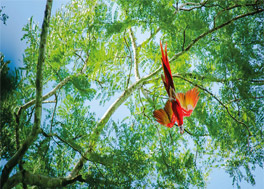


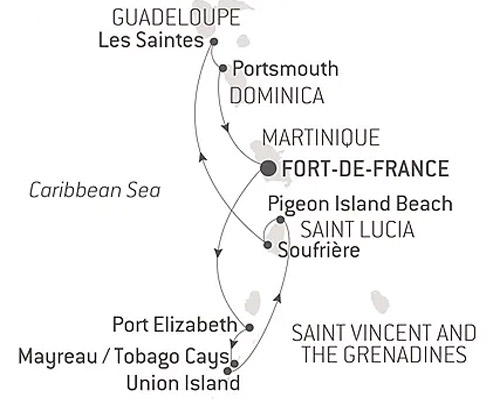


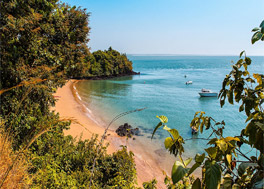
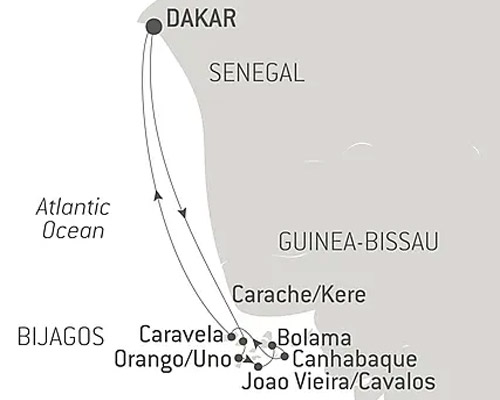
![7 Days - Treasures of the Greek Isles [Athens, Greece to Athens, Greece] 7 Days - Treasures of the Greek Isles [Athens, Greece to Athens, Greece]](/images/packages/Untitled-1pkg.jpg)
![7 Days - Treasures of the Greek Isles [Athens, Greece to Athens, Greece] 7 Days - Treasures of the Greek Isles [Athens, Greece to Athens, Greece]](/images/packages/extraimages/2268_Untitled-1map.jpg)
